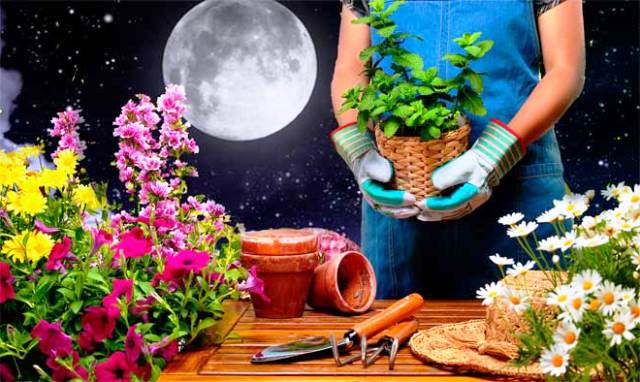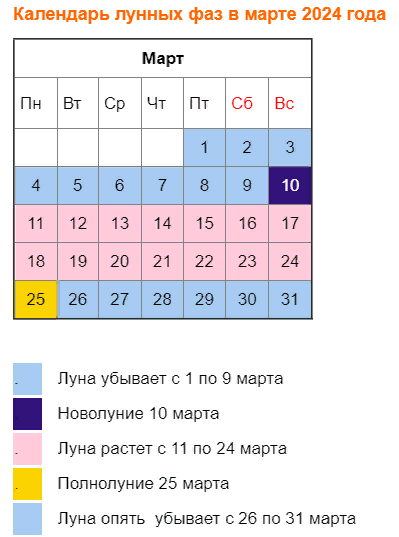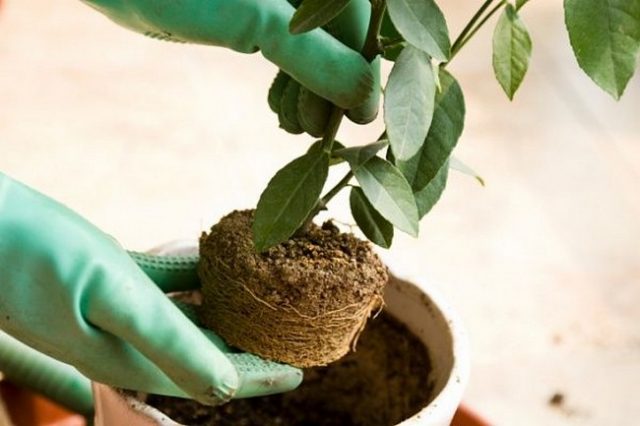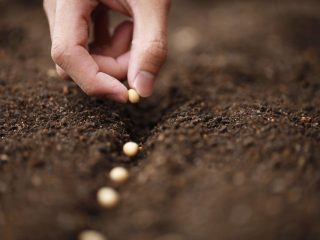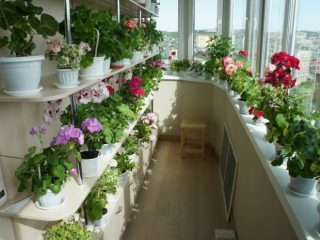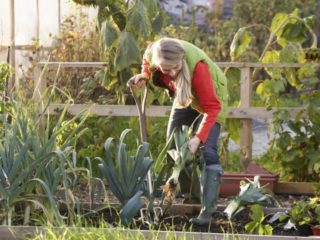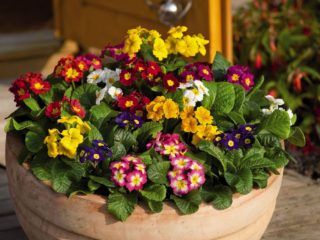Content
If you pay close attention to all living things, including flowers, shrubs and trees, it is easy to notice that everything that grows and breathes has its own natural rhythms of development and patterns of development. The Moon has a significant impact on the lives of representatives of the plant kingdom. And if garden plants are still sleeping, then many inhabitants of window sills in warm rooms begin to awaken from the first spring sun and require increased attention. Therefore, the lunar calendar for March for indoor flowers has a special meaning. But also for other plants that overwinter in the form of bulbs or tubers, as well as for sowing work, the influence of the moon can be of decisive importance.
Florist's lunar calendar for March 2024
Lunar rhythms determine the breathing of the Earth and everything that lives and grows on it.At the stage of the growing Moon, the planet seems to exhale, and all the energy, strength and life-giving juices rush from its depths upward, to the stems, leaves, flowers and fruits. When the Moon begins to wane, the Earth takes a breath, and all the energy it receives from the Sun, air and rain (snow) rushes down to the roots.
It is for this reason that the days of the new moon and full moon in the lunar calendar are the most dangerous and unpredictable for working with plants. After all, these are moments of a kind of “delay” in the breath of the earth, the fading of all processes.
The lunar influence can also be felt when it passes through various planetary constellations, in other words, the signs of the zodiac. Each constellation has some effect on certain parts of plants. So there are:
- root days (Capricorn, Virgo, Taurus), when the moon has its maximum impact on the roots of plants and fruits in the earth;
- leaf days (Pisces, Scorpio, Cancer), leaves are subject to special lunar influence;
- flower days (Aquarius, Libra, Gemini) when the moon affects the flowers of all plants;
- fetal days (Sagittarius, Leo, Aries), in which the influence of the moon is especially strong on fruits located above the ground.
However, what is more important is that some zodiac constellations are particularly fertile, capable of growth and development. These are the water signs (Scorpio, Cancer, Pisces) and a little less so the earth signs (Virgo, Capricorn, Taurus).
The signs of fire and air are not distinguished by their fertility and speed of development, but the periods when the moon passes the constellations of Aquarius, Sagittarius and Leo are considered especially unfavorable and “empty”.
Moon phases in March
From March 1 to 9 and from March 26 to 31, the time of the waning moon comes, when special attention should be paid to the root system of plants.During this period, fertilizing with fertilizers or treating with rooting stimulants will be especially useful. You can think about all the bulbous and tuberous flowers, place them for germination or sow seeds from flower crops with especially developed roots (for example, perennials).
Due to the particularly intensive growth of roots, the period is quite favorable for any flower cutting, trimming stems or leaves.
The moment of the new moon occurs on March 10, but this period is usually attributed to three days around.
From March 11 to March 24, the moon begins to grow, and one of the most favorable periods begins for all kinds of manipulations with flowers, especially indoors. Since all the juices move upward, the aboveground part of the plants receives additional energy for growth and development. At the same time, the roots slightly lose their elasticity, become more pliable, and many plants can be replanted without fear of significant damage to the root system.
The same period is the most favorable for sowing flowers, in which it is their above-ground part that plays a decisive role (tall or lush and abundantly blooming). Particularly successful are annuals, which develop a mass of greenery, leaves and flowers in a short period.
But this period according to the lunar calendar is not very favorable for pruning or shortening plant stems, since as a result, their growth can be significantly stunted. You should also leave the tubers and bulbs alone for the time being.
On March 25, the full moon period begins, during which it is advisable to completely forget about indoor and garden plants for a while, since nothing positive can be brought to them at this time.
Favorable days
Based on the foregoing, the most favorable days for working with plants according to the gardener’s calendar in March 2024 are the following:
If you urgently need to plant or transplant a flower, and there is still a lot of time before the auspicious day, then you can choose a day other than those listed above. You just shouldn’t work with plants on unfavorable days.
Unfavorable days
These days, you should not tempt fate and engage in sowing or planting. After all, flowers transplanted on such days may be sick for a long time and not recover. And the seedlings from the sown seeds may not sprout at all, or they will be thin and weak.
The most unfavorable days in March are 7-13, 20, 21 and 25.
Florist calendar for March 2024: planting and caring for garden flowers
March is the first month of spring, and despite the abundance of snow and frost outside, nature begins to awaken, albeit slowly.
March is especially busy for sowing. Although some flowers can be propagated by cuttings already in March (chrysanthemums, dahlias), and tuberous and bulbous flowers can be germinated for earlier flowering.
Sowing calendar for March 2024 for gardeners
In March, the sun begins to delight with its presence more and more often, which means it’s time for the gardener to begin the main sowing work at home, that is, growing seedlings. Moreover, according to the florist’s lunar sowing calendar for 2024, there are many days in March that are most favorable for sowing both annual and perennial flowers.
Work in the rose garden in March
Of course, in most regions of Russia in March everything is still under a deep cover of snow, and in the rose garden all the plants are still dormant.
But even in this case, March days are favorable for temporarily opening the end covers of roses and ventilating them. This should be done on any day according to the lunar calendar, except for frankly unfavorable ones. It is only necessary that the day be sunny and warm, that is, the temperature exceeds 0 °C. In the evening, the shelters are returned to their place to protect the plants from possible further frosts. This procedure will serve as a good preventative against damping off of rose stems.
Sowing annuals
The most common annual flowers, which are usually sown for seedlings in March, are:
- lefty;
- Drummond's phlox;
- sweet pea;
- cineraria;
- verbena;
- gatsaniya;
- cellosium;
- salvia;
- Chinese and Turkish cloves;
- Snapdragon;
- fragrant tobacco;
- lavatera;
- lobelia;
- petunia.
Some large seeds, such as sweet peas, need to be soaked in warm water for a day and only then sown. Others, with very small seeds, such as lobelia, petunia, snapdragon, need to be sown on the surface of the soil, without blocking them from the light.
But some annual and biennial flowers were sown indoors even earlier, in February, because they have a long development period.
Preparing the bulbs
March is the ideal time to prepare many summer-blooming bulbous and tuberous flowers for planting. Some of them can even be propagated by cuttings, after germinating them at the beginning and end of March.
The following types of flowers are suitable for germination:
- tuberous begonias, which, when planted in March, will be able to delight with flowers at the end of June or at the beginning of July;
- zephyranthes, it is planted in March, 5-7 pieces in one pot;
- calla lilies - their bulbs can be planted at the end of March, for flowering - from the end of June;
- cannas - if you start germinating the rhizomes of these garden giants in March, then you can wait for them to bloom in July;
- ranunculus, before planting, the corms must be soaked for a day in warm water;
- Tigridia, when planted in March, blooms in June.
March is also the most suitable month for propagating perennial dahlias and chrysanthemums by cuttings. To do this, chrysanthemum mother plants are moved to a room at room temperature to form new shoots. Dahlia rhizomes are also planted in a light soil mixture and wait until they germinate. When young shoots reach a height of 6-10 cm, they are carefully broken out or cut off. Dip in Kornevin and plant for rooting in light soil, covering the top with a plastic bag.
Work in the flower garden in March
In the southern regions of Russia in March, depending on weather conditions, it is already possible to begin work in flower beds. They usually start with their sanitary cleaning: removing old leaves and stems, removing weeds and old mulch, and removing winter coverings.
If the weather is warm, then many perennial flowers can be fed for the first time by pouring a solution of ammonium nitrate. Treatment against possible diseases (spraying with Bordeaux mixture) and pests (treatment with phytoverm) would also be useful.
Lunar calendar for March 2024: caring for indoor flowers
It is very important not to forget about your indoor plants in March. After all, many of them, with increasing daylight hours, end their dormant period, and they begin to increase the vegetative mass and lay buds.
When can you replant home flowers?
According to the gardener's calendar for March 2024, it is best to replant indoor plants on March 2-6, 17, 18, 19, 22, 23, 24, 29, 30 and 31.
The following are especially in need of transplantation during this period:
- young indoor plants, up to 3-4 years old;
- flowers that are characterized by intensive growth;
- indoor plants that will bloom in spring or summer, so you have time to replant them before buds form;
- those that have not been transplanted for more than 3-4 years.
Recommendations for caring for indoor flowers in March
The table above lists the basic procedures for caring for indoor plants in March 2024, indicating the recommended days for work.
Conclusion
The lunar calendar for March for indoor flowers and garden plants can provide real assistance in planning actions for sowing, planting and caring for plant pets. After all, there are enough problems in modern life. Therefore, it is better not to aggravate the situation and carry out all the necessary work within the recommended time frame.
